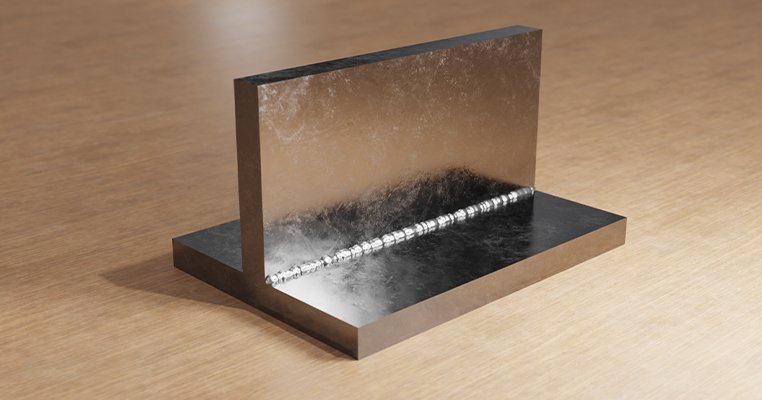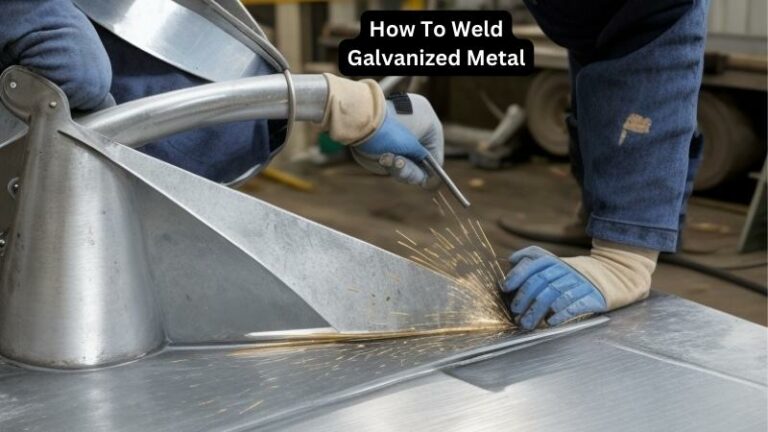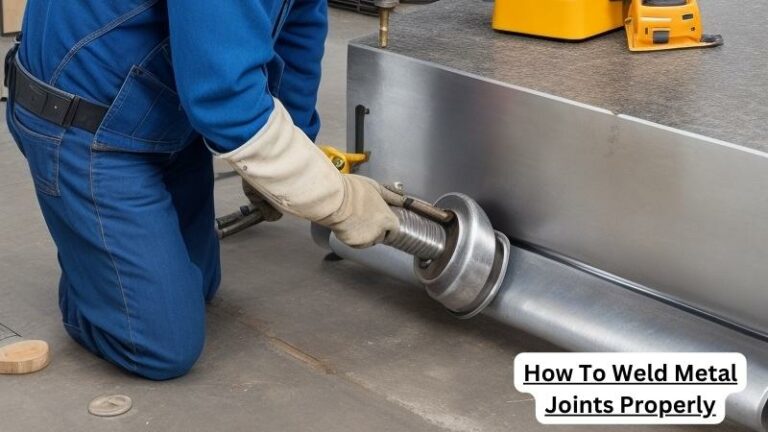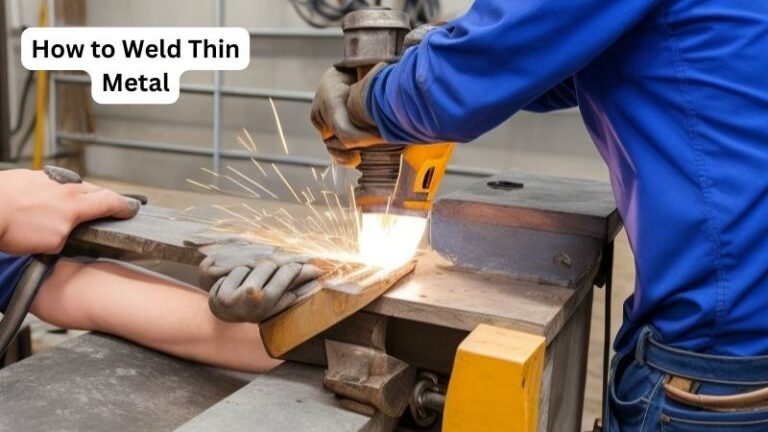Master The Art Of Welding T-Joints: A Step-By-Step Guide
Looking to learn how to weld T-joints? You’ve come to the right place! Welding T-joints can be a crucial skill to have for a wide variety of projects, whether you’re working on a metal sculpture or building a structure. In this article, we’ll guide you through the process, step by step, so you can confidently tackle T-joint welding with ease. From understanding the basics to mastering the technique, we’ll provide practical tips and insights to help you achieve strong and reliable welds. So grab your welding gear and let’s dive into the world of T-joint welding!
How to Weld T-Joints
Section 1: Understanding T-Joints
In the world of welding, T-joints are one of the most common types of joints that welders come across. As the name suggests, T-joints resemble the letter “T” and are formed when two pieces of metal intersect at a perpendicular angle. Welding T-joints requires careful preparation, proper technique, and attention to detail.
1.1 Importance of T-Joints:
T-joints are widely used in various industries, including construction, automotive, and manufacturing. They provide structural strength and stability to metal fabrications, allowing them to withstand heavy loads and maintain their integrity.
1.2 Types of T-Joints:
There are different types of T-joints, each with its own characteristics and welding requirements. Common types include:
- Fillet T-Joint: The fillet T-joint is formed when the horizontal piece of metal is welded onto the vertical piece along the edge.
- Groove T-Joint: In a groove T-joint, the horizontal piece of metal fits into a groove cut in the vertical piece, creating a stronger weld.
- Corner T-Joint: The corner T-joint is formed when the horizontal and vertical pieces of metal meet at a 90-degree angle.
Section 2: Preparing for Welding
Proper preparation is crucial to ensure a successful T-joint weld. Here are some key steps to follow:
2.1 Material Selection:
Choose the appropriate metal for your T-joint weld based on the application and desired strength. Common metals used for T-joint welding include steel, aluminum, and stainless steel.
2.2 Cleaning the Metal:
Before welding, make sure to clean the surfaces of the metal pieces to remove any dirt, rust, or contaminants. Use a wire brush or grinder to clean the area that will be welded.
2.3 Joint Preparation:
Depending on the type of T-joint, you may need to prepare the joint by cutting a groove or beveling the edges. Follow the specifications provided in your welding project plans or consult with experienced welders for guidance.
2.4 Clamping and Alignment:
Proper alignment of the metal pieces is crucial for a successful weld. Use clamps or welding magnets to hold the pieces together securely in the desired position.
2.5 Safety Precautions:
Always prioritize safety when welding. Wear appropriate protective gear, such as welding gloves, goggles, and a welding helmet. Ensure proper ventilation in your workspace to prevent exposure to harmful fumes.
Section 3: Welding Techniques
When it comes to welding T-joints, there are several techniques you can employ. The choice of technique depends on the type of T-joint, material, and welding equipment available. Here are some commonly used techniques:
3.1 MIG Welding:
Metal Inert Gas (MIG) welding is a popular choice for T-joint welding due to its versatility and ease of use. MIG welding uses a wire electrode that is fed through a welding gun, along with a shielding gas to protect the weld from atmospheric contamination.
3.2 Stick Welding:
Shielded Metal Arc Welding (SMAW), commonly known as stick welding, is another widely used method for T-joint welding. Stick welding involves using a consumable electrode coated in flux to create the weld.
3.3 TIG Welding:
Tungsten Inert Gas (TIG) welding is a precise and clean welding process suitable for T-joints. TIG welding utilizes a non-consumable tungsten electrode to produce the weld, along with a separate filler metal if required.
3.4 Welding Techniques by Joint Type:
Each type of T-joint may require specific welding techniques. For example:
- Fillet T-Joint: Weld along the joint using a weaving motion or a series of overlapping beads to ensure proper fusion.
- Groove T-Joint: Fill the groove completely with weld metal, ensuring proper penetration and fusion between the horizontal and vertical pieces.
- Corner T-Joint: Weld both sides of the joint, building up the weld metal evenly on both pieces to create a strong connection.
Section 4: Weld Inspection and Quality Assurance
Inspecting the weld after completion is an essential step to ensure its quality and integrity. Here are some inspection methods and quality assurance techniques:
4.1 Visual Inspection:
Perform a visual inspection of the weld to check for any visible defects, such as cracks, porosity, or lack of fusion. Use adequate lighting and magnification if necessary.
4.2 Non-Destructive Testing (NDT):
Consider using non-destructive testing methods, such as ultrasonic testing or radiographic testing, to detect hidden defects or inconsistencies within the weld.
4.3 Quality Control Measures:
Implement quality control measures throughout the welding process to ensure consistent and reliable T-joint welds. This may include proper calibration of welding equipment, adherence to welding procedures, and maintaining accurate documentation.
Section 5: Welding Challenges and Troubleshooting
Welding T-joints can present certain challenges that may affect the quality of the weld. Here are some common issues and troubleshooting tips:
5.1 Uneven Penetration:
If you notice uneven penetration between the horizontal and vertical pieces, adjust the welding parameters, such as voltage or wire speed, to achieve better fusion.
5.2 Cracking:
Cracking can occur due to various factors, such as improper joint preparation, high welding speed, or excessive heat input. To prevent cracking, ensure proper joint preparation, control the welding speed, and use proper heat management techniques.
5.3 Porosity:
Porosity, or the presence of gas pockets within the weld, can weaken its strength. Avoid porosity by cleaning the metal surface thoroughly, using dry electrodes, and maintaining a proper shielding gas flow.
Section 6: Practice and Improvement
Like any skill, mastering T-joint welding takes practice and continuous improvement. Here are some tips to enhance your welding skills:
6.1 Welding Exercises:
Regularly practice T-joint welding by creating mock joints with scrap metal. Focus on techniques like maintaining a steady arc, controlling travel speed, and achieving proper fusion.
6.2 Seek Guidance from Experienced Welders:
Connect with experienced welders or join welding communities to learn from their expertise. They can provide valuable insights, tips, and tricks to help you improve your T-joint welding skills.
6.3 Continued Learning:
Stay updated with the latest welding techniques, equipment advancements, and industry best practices. Attend workshops, seminars, and online courses to expand your knowledge base and refine your skills.
Section 7: Conclusion
Welding T-joints requires a combination of proper preparation, technique, and attention to detail. By understanding the different types of T-joints, selecting the appropriate welding technique, and implementing quality control measures, you can achieve strong and reliable T-joint welds. Remember, practice and continuous learning are key to improving your welding skills. So, grab your welding helmet, ignite the spark, and embark on your journey to becoming a T-joint welding master!
Tee joint welding in 2F position 👨🏭#welding #beginnerswelder #welder
Frequently Asked Questions
What is a T-joint in welding?
A T-joint is a common welding joint used to join two pieces of metal at right angles, forming the shape of a “T”. It is widely used in various applications, including construction, fabrication, and automotive industries. Welding a T-joint requires careful preparation, precise welding techniques, and appropriate safety measures to ensure a strong and durable bond between the two pieces of metal.
What are the preparation steps for welding a T-joint?
Before starting to weld a T-joint, ensure that the metal surfaces to be joined are clean, free from rust, dirt, and other contaminants. Use a wire brush or grinder to remove any surface impurities. Next, accurately measure and mark the position where the two metal pieces will intersect, making sure they form a right angle. Secure the pieces in the desired position using clamps or magnets before proceeding to the welding process.
What welding techniques are commonly used for T-joints?
The most common welding techniques for T-joints include shielded metal arc welding (SMAW), gas metal arc welding (GMAW), and flux-cored arc welding (FCAW). Each technique requires specific equipment, consumables, and skills. SMAW involves using a coated electrode, GMAW utilizes a welding gun with a continuous wire feed, and FCAW employs a tubular wire with a flux core. Familiarizing yourself with these techniques and selecting the most suitable one for your project is essential.
What safety precautions should I take when welding T-joints?
Welding involves potential hazards, so taking appropriate safety precautions is crucial. Wear personal protective equipment (PPE) such as a welding helmet, gloves, and flame-resistant clothing to protect yourself from sparks, UV rays, and heat. Ensure proper ventilation in the welding area to prevent inhaling harmful fumes. Extinguish any flammable materials nearby and keep a fire extinguisher within reach. Additionally, make sure you have received proper training and follow all safety guidelines to minimize the risk of accidents.
What are some common challenges faced when welding T-joints?
Welding T-joints can present challenges, especially for beginners. Some common issues include inadequate penetration, lack of fusion, warping, and distortion. Achieving proper penetration and fusion requires adjusting the welding parameters, such as amperage and travel speed, to ensure sufficient heat input. Minimizing warping and distortion can be achieved by using proper clamping techniques, preheating the metal, and employing intermittent welding instead of continuous bead runs. Practice, patience, and learning from experience help overcome these challenges.
How can I ensure a strong and durable weld on T-joints?
Obtaining a strong and durable weld on T-joints requires proper technique and attention to detail. Start by selecting the correct welding process, electrode, or filler material suitable for the base metal. Ensure that the joint surfaces are clean and free from contaminants. Aim for sufficient penetration and fusion by adjusting welding parameters appropriately. Maintain a consistent travel speed and avoid excessive heat input to prevent distortion. Finally, carry out post-weld inspection and, if required, perform necessary grinding or finishing to achieve the desired strength and appearance of the weld.
Are there any alternatives to welding T-joints?
While welding is the most common method for joining T-joints, other alternatives can be considered depending on the application and materials involved. These alternatives include bolting, riveting, brazing, or using adhesive bonding techniques. Each method has its advantages and limitations, so it is important to evaluate the specific requirements of your project before deciding on the most appropriate joining technique. Consult with professionals or experts in the field to determine the best alternative if welding is not feasible or desired.
Final Thoughts
To successfully weld T-joints, it is crucial to follow a precise and systematic approach. First, ensure the workpiece is clean and free of any contaminants. Next, choose the appropriate welding technique and position the joint correctly. Use the correct welding parameters and maintain a steady speed and angle throughout the process. Regularly inspect and adjust the weld pool to achieve consistent penetration. Finally, take the necessary safety precautions and practice proper post-welding techniques. By mastering the steps outlined in this guide, you can confidently weld T-joints and achieve strong and durable results.



